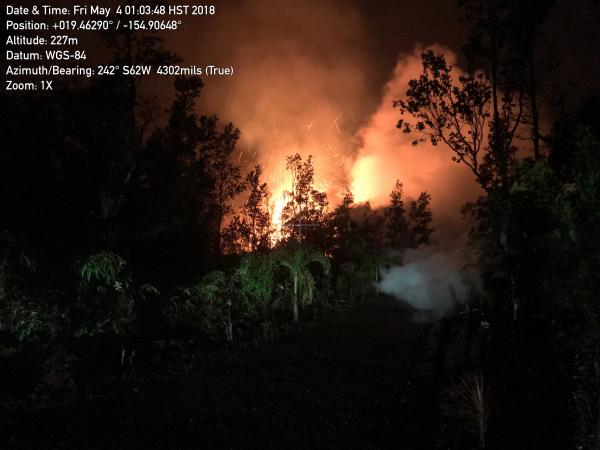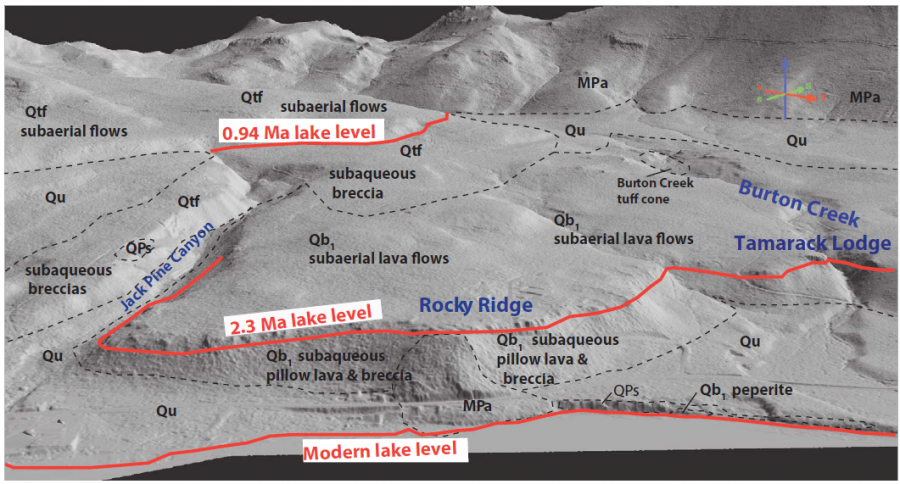angelburst29
The Living Force
Since New Years Day Mount St. Helens has experienced 40 earthquakes within its vicinity as aftershocks continue every few hours.
Mount St. Helens Is Rumbling Again With 40 Earthquakes Since New Years Day Jan 3, 2018
https://www.forbes.com/sites/trevornace/2018/01/03/mount-st-helens-is-rumbling-again-with-40-earthquakes-since-new-years-day/#5dfb2967370b
The most powerful earthquake was a magnitude 3.9 that occurred around midnight west coast time about 5 miles from Mount St. Helens and 23 miles from the town of Morton.
The 3.9 magnitude earthquake was felt in Portland but there were no reported injuries or damage. Since that earthquake there have been 16 more earthquakes, averaging about every half hour with magnitudes from 0.6 to 2.6. The USGS reports that the M3.9 earthquake to the northeast of Mount St. Helens is aligned with regional stress as opposed to the localized Mount St. Helen's stress axis, thus, they do believe this earthquake is related to the nearby volcano.
It is common to experience swarms of earthquakes at Mount St. Helens. The recent earthquakes appear to be both from regional stress (i.e. not related to the volcano) and from the volcano itself. In both cases, this is not a sign of an impending eruption, the earthquakes are a result of an active volcanic system and movement along regional stress fields.
Mount St. Helens is most commonly known for its major eruption in 1980, the deadliest and most economically damaging volcanic event in the history of the United States. The stratovolcano is situated just 96 miles from Seattle and 50 miles from Portland, making an eruption especially dangerous.
While Mount St. Helens hasn't had a large eruption for the past almost 38 years (there have been smaller eruptions as recently as 10 years ago) it is still considered an active stratovolcano by geologists. In fact, Mount St. Helens is considered a relatively young volcano, forming in the past 40,000 years and has been the most active volcano in the Cascade Range within the past 10,000 years.
This mountain range, along with Mount St. Helens, will continue to experience active volcanism and deadly eruptions as long as the Juan de Fuca Plate is subducting underneath the North American Plate. The dense, relatively thin, and low lying Juan de Fuca Plate is being pushed against and under the thicker and less dense North American Plate. This is due to the continuous spreading and opening of the Pacific Ocean, which has resulted in the Pacific Ring of Fire.
While the recent earthquakes may make residents nearby Mount St. Helens uneasy, there is no immediate danger of an eruption. However, this is another sign of why we need constant volcano and earthquake monitoring.
With modern monitoring systems and subsurface modeling, geologists and geophysicists are able to build a 3-dimensional picture of volcanoes such as Mount St. Helens. The constant input of data, from seismic activity to precise topographical changes allows better prediction of a future event. While we can't be certain, chances are the next time Mount St. Helen erupts, we will be significantly better prepared.
Mount St. Helens Is Rumbling Again With 40 Earthquakes Since New Years Day Jan 3, 2018
https://www.forbes.com/sites/trevornace/2018/01/03/mount-st-helens-is-rumbling-again-with-40-earthquakes-since-new-years-day/#5dfb2967370b
The most powerful earthquake was a magnitude 3.9 that occurred around midnight west coast time about 5 miles from Mount St. Helens and 23 miles from the town of Morton.
The 3.9 magnitude earthquake was felt in Portland but there were no reported injuries or damage. Since that earthquake there have been 16 more earthquakes, averaging about every half hour with magnitudes from 0.6 to 2.6. The USGS reports that the M3.9 earthquake to the northeast of Mount St. Helens is aligned with regional stress as opposed to the localized Mount St. Helen's stress axis, thus, they do believe this earthquake is related to the nearby volcano.
It is common to experience swarms of earthquakes at Mount St. Helens. The recent earthquakes appear to be both from regional stress (i.e. not related to the volcano) and from the volcano itself. In both cases, this is not a sign of an impending eruption, the earthquakes are a result of an active volcanic system and movement along regional stress fields.
Mount St. Helens is most commonly known for its major eruption in 1980, the deadliest and most economically damaging volcanic event in the history of the United States. The stratovolcano is situated just 96 miles from Seattle and 50 miles from Portland, making an eruption especially dangerous.
While Mount St. Helens hasn't had a large eruption for the past almost 38 years (there have been smaller eruptions as recently as 10 years ago) it is still considered an active stratovolcano by geologists. In fact, Mount St. Helens is considered a relatively young volcano, forming in the past 40,000 years and has been the most active volcano in the Cascade Range within the past 10,000 years.
This mountain range, along with Mount St. Helens, will continue to experience active volcanism and deadly eruptions as long as the Juan de Fuca Plate is subducting underneath the North American Plate. The dense, relatively thin, and low lying Juan de Fuca Plate is being pushed against and under the thicker and less dense North American Plate. This is due to the continuous spreading and opening of the Pacific Ocean, which has resulted in the Pacific Ring of Fire.
While the recent earthquakes may make residents nearby Mount St. Helens uneasy, there is no immediate danger of an eruption. However, this is another sign of why we need constant volcano and earthquake monitoring.
With modern monitoring systems and subsurface modeling, geologists and geophysicists are able to build a 3-dimensional picture of volcanoes such as Mount St. Helens. The constant input of data, from seismic activity to precise topographical changes allows better prediction of a future event. While we can't be certain, chances are the next time Mount St. Helen erupts, we will be significantly better prepared.


